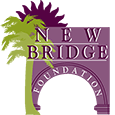Anyone who has been through the journey of recovery from addiction knows that it can be a challenge. Withdrawal symptoms and cravings can make it hard to focus on overcoming the underlying causes of addiction. At New Bridge Foundation® in Berkeley, CA, we understand the complexities of addiction and offer a powerful solution to aid in your recovery journey: medication assisted treatment (MAT). This comprehensive approach combines FDA-approved medications with behavioral counseling to support sustainable recovery.
What Is MAT?
Medication assisted treatment is not just about administering medications; it’s about integrating these medications with counseling to holistically treat substance use disorders. The medications used in MAT normalize brain chemistry, block the euphoric effects of alcohol and opioids, relieve physiological cravings, and stabilize body functions. All of these benefits make it easier for participants to focus on the other aspects of recovery, like building healthy coping skills and preventing relapse.
Who is a candidate for MAT? Generally, MAT is suited for individuals who have struggled with addiction to opioids or alcohol and have not had success with other treatment methods. It’s also beneficial for those who need a structured therapy program to handle severe or long-term addiction.
Medications Used in MAT
The choice of medication depends on the type of addiction being treated.
For opioid addiction, common medications include buprenorphine and naltrexone. Buprenorphine targets opioid receptors and helps ease withdrawal symptoms while blocking the euphoric effects of opioids. Naltrexone blocks opioid receptors and prevents opioids from having an effect, making it useful for preventing relapse after detox.
For alcohol dependence, MAT often includes medications such as disulfiram, acamprosate, and naltrexone. Disulfiram works by producing severe physical reactions when alcohol is consumed, thus deterring drinking. Acamprosate helps stabilize the brain’s chemical balance in someone who has recently stopped drinking but does not prevent withdrawal symptoms. Naltrexone, also used for opioid treatment, helps reduce cravings for alcohol.
Benefits of Choosing MAT
Adopting MAT can significantly enhance your overall quality of life as you navigate the path to recovery. Here are some key benefits:
- Reduces withdrawal symptoms – MAT can alleviate the severe and often uncomfortable withdrawal symptoms associated with detoxification from substances like opioids and alcohol.
- Lowers risk of relapse – By reducing cravings, MAT can significantly lower the risk of relapse, especially in the early stages of recovery when individuals are most vulnerable.
- Improves treatment retention – Patients receiving MAT typically stay in treatment longer than those who do not receive pharmacological assistance. Improved retention rates lead to better long-term recovery outcomes.
- Supports holistic recovery – MAT is most effective when combined with counseling, providing a comprehensive approach to treat the whole person, not just the addiction.
There is a misconception about MAT that it’s just substituting one substance for another, but that couldn’t be further from the truth. It’s simply a tool that can help you focus on building a foundation for a lifetime in recovery.
Contact New Bridge Foundation® for MAT in the Bay Area
Choosing New Bridge Foundation® means you are choosing a path lined with expert care, understanding, and commitment to your health and well-being. Our approach is continuously validated by our recognition as one of America’s top addiction treatment centers by Newsweek for five consecutive years. Are you ready to make a profound change in your life?
Our MAT services in Berkeley, CA, are specifically designed to support participants who are eager to regain control of their lives. Contact us today at 866.772.8491 or reach out online to learn how MAT can assist you or your loved one in overcoming the complexities of addiction recovery. Our dedicated team is here to guide you every step of the way toward a healthier future.








